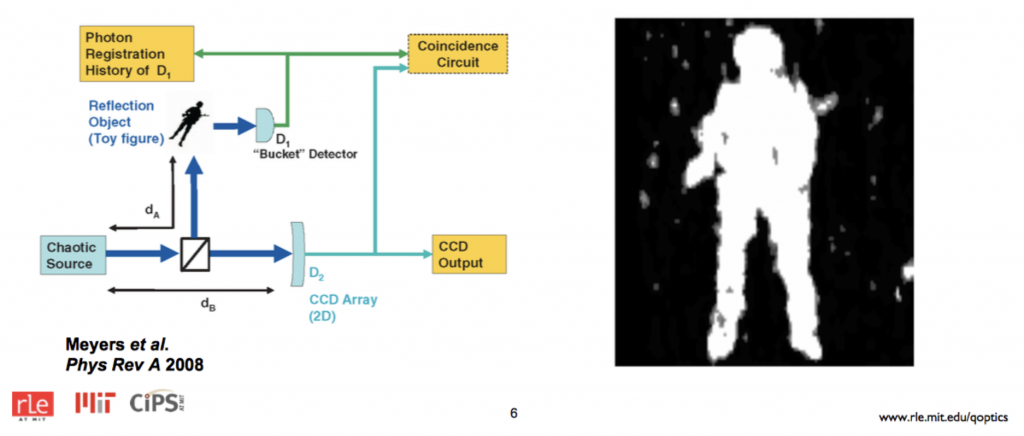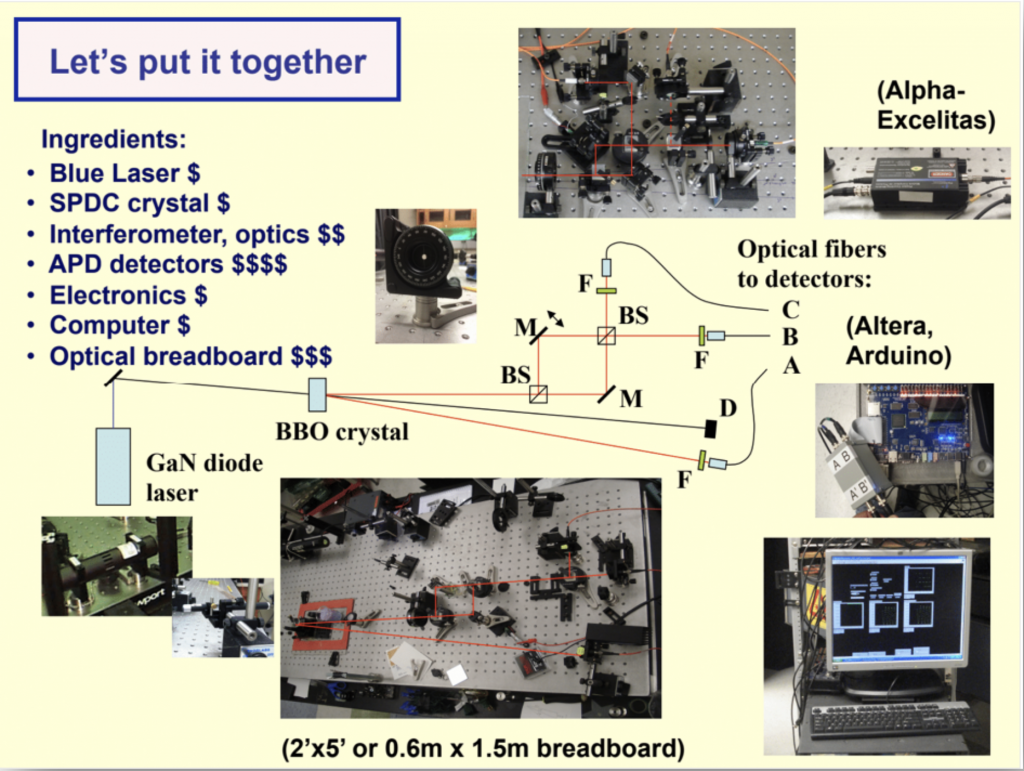By uncertain light: the use of quantum mechanics in imaging
Ghost imaging and the ability to capture images with limited light
How many photons does it take to form an image? Where do those photons come from? Today our understanding of capturing an image gives us decidedly non-supernatural answers to those two questions. Light shines onto an object, and the sum of those photons is reflected into a detector of some kind, creating an image. If it’s captured digitally, as most images are today, then there may be some amplification of the image, which is then mapped to pixels to form a two-dimensional representation of the object. The more pixels, and the lower the noise, the better the resolution of the resulting image.
Recent work in quantum imaging and a technique known as “ghost imaging” gives fundamentally different answers. Here, in the strange world of quantum mechanics, you can form an image of an object with light that has never interacted with that object. And the minimum number of photons you need may very well be closer to “1” than we would ever have expected.
Ghost imaging allows a high-resolution camera to produce an image of an object that the camera itself cannot see. It uses two sensors: one that looks at a light source and another that looks at the object. These sensors point in different directions, and differ significantly: the sensor facing the light source (away from the object) is a high-resolution sensor like a camera, while the sensor facing the object is a single-pixel bucket sensor, like a photodiode.

Afterwards, a computer program compares and combines the patterns received from the object and the light. This creates a “ghost image,” a black-and-white or color picture of the object being photographed. The earliest ghost images were silhouettes, but current setups can render objects with more detail.
An Inherently Uncertain Technology
By nature, there is not a lot of certainty in quantum mechanics. Ghost imaging is no exception – researchers are not totally certain that a given ghost image is created – or best explained – using quantum theory or classical physics. On one side, the ghost image may be possible because of quantum entanglement, where when measured, separate particles can become “entangled,” losing their individual qualities and becoming parts of a more complicated probability function that describes both particles together. Einstein called this “spooky action at a distance.” Or it could be that enough photons could be similar to each other that the comparison works because they’re “close enough,” and classical physics still holds sway. One theory, the other, or both may be the cause behind ghost imaging.

A Dynamic Field
Don’t feel bad if you haven’t heard much about ghost imaging. It is new, it is only just starting to become understood, and the images are still very primitive. The military has been in interested in this field since the 00s, but tactical (or even practical) applications are still a ways off.
Still, the potential is enormous. Scientists envision soldiers using a quantum ghost imager to look through battlefield smoke and see around corners. The fact that ghost imaging can use almost any light source from a fluorescent bulb, lasers, or even the sun, expands its applications even further beyond. Satellites could capture earth imagery that it couldn’t directly “see” due to clouds, fog, or smoke beyond the ability of conventional imaging.
As a result, these are only the very earliest days of this technology, even though it has received a lot of attention in 2017 in the form of new research, looking for ways to improve the technique:
1. Ditch the Camera, Bring More Computers
In computational ghost imaging (CGI), you don’t even need a camera. Instead, several known random patterns are projected on the object to be imaged and a lens collects the photons reflected by the object. The light intensities are measured by the bucket detector, and an image of the object is then created by calculating the correlations between the known random patterns and the measured light intensities. CGI can image objects even in noisy environments. Since random patterns are used to create the object images, the reconstructed images are contaminated by noise. To improve the quality of CGI images, improved correlation calculation methods have been devised.
Although CGI can obtain two- or three-dimensional images with a single or a few bucket detectors, the quality of the reconstructed images is reduced by noise due to the reconstruction of images from random patterns. In this 2017 study, “Computational ghost imaging using deep learning,” researchers improved the quality of CGI images using a deep neural network to automatically learn the features of noise-contaminated CGI images.
2. Get it All at Once
Ghost imaging typically requires long acquisition times, making it less useful for dynamic scenes. To handle this problem, researchers published Single-shot thermal ghost imaging using wavelength-division multiplexing, which proposes a single-shot thermal ghost imaging scheme via wavelength-division multiplexing technique. They generated thousands of patterns simultaneously by modulating a broadband light source with a wavelength dependent diffuser. These patterns carry the scene’s spatial information and then the correlated measurements are coupled into a spectrometer for the final reconstruction.
3. Catching Ghosts in the Dark
Conventional imaging at low light level requires hundreds of detected photons per pixel to suppress the Poisson noise for accurate reflectivity inference. In First-Photon Ghost Imaging, researchers propose a high-efficiency photon-limited imaging technique, called first-photon ghost imaging, which recovers the image from the first-photon detection by exploiting the physics of low-flux measurements and the framework of ghost imaging. The experimental results demonstrated that it could retrieve an image by only 0.1 photon detection per pixel, which is three orders lower than the conventional imaging technique. This technique could have applications in everything from biological microscopy to remote sensing.

Looking “Forward,” in a Slightly Different Direction
The first ghost imaging experiment was demonstrated in 1995 and techniques have moved quickly since then. Our growing ability to create and manipulate quantum states of light has allowed us to develop new technologies that exploit the seemingly strange properties of quantum states as information and now imaging. Quantum imaging gives us the new possibility of overcoming the limits of today’s optics, which are ruled by classical physics. Instead of just lenses, wavelengths, polarization, and SNR, we’ll be using quantum resources like entanglement and sub-poissonian statistics to perform ghost imaging, sub shot noise imaging and sub Rayleigh imaging for actual practical applications.



